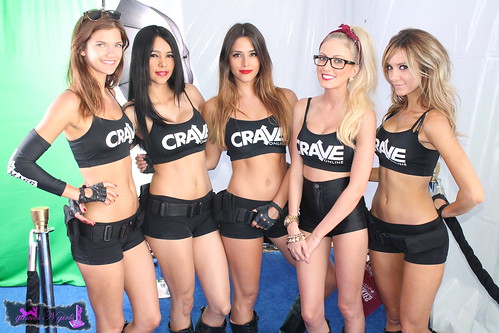Girl Gamers - Part II
Saturday, January 07, 2017Continuation of an article I wrote back in 2012. View the first part here.
Women in video games are incredibly sexualised. I loved Lara Croft when I was young, and she has grown with me throughout my life. When I was a child I did not notice her DD breasts and preposterous proportions— I saw a strong, independent bad- ass who I could look up to, a woman who wasn’t a ‘damsel in distress’.
Lara Croft may have broken the mould concerning women in video games, but she still conformed to the idea of a perfect
woman. Men wanted to be in control of Lara and some claimed they wanted to take care of her. Women wanted to be her
because of how strong she was and she had the ‘perfect body’. The majority of female characters in video games have big
breasts, impossible waist sizes and outfits that are highly impractical when climbing up a mountain or getting into fights.
Dead or Alive is the perfect example- busty, scantily clad females wearing bikinis and fighting each other... as you do...

Of course men do not get off lightly with how they are portrayed in video games either. Most of them are dashingly
handsome with huge toned muscles. Nothing about them is realistic. Both genders are painted to how society
thinks the perfect specimen should be.
I do not blame the gaming market for this; the media in general are notorious when it comes to projecting a perfect person. People are under pressure from all sides on how they should look, dress, feel and live. Airbrushed billboards, magazines, television adverts stare out from every corner, men women and children are being told how they should be. But who is to say what is ‘right’? How we should dress? Who dares to have that authority?
I do not blame the gaming market for this; the media in general are notorious when it comes to projecting a perfect person. People are under pressure from all sides on how they should look, dress, feel and live. Airbrushed billboards, magazines, television adverts stare out from every corner, men women and children are being told how they should be. But who is to say what is ‘right’? How we should dress? Who dares to have that authority?

One way I think they could make a step in the right direction is to erase or adapt booth babes. If you don’t know what booth babes are, you have never been to a gaming convention. They are models that stand around in very short skirts, tight t-shirts and smile at passing gamers. I doubt many of them actually play games, they are there to make men drool and possibly get a few of said men to play a demo of the game the babes are trying to promote. Why are there no booth men? Handsome guys with six packs greeting the swelling number of female gamers. That would be fair, and then both sexes would be guilty of objectifying each other.
There is one thing I’m not quite sure where I stand; back in May, Maxim held a girl gamer competition. Girls posted sexy
pictures of themselves on a website to receive votes from fellow gamers - male and female. On one hand, I’m happy
because female gamers in general are getting more accepted. But on the other hand, many of the pictures are semi-naked
with much cleavage and pouting. The comments are from mostly men leering over them and a few wishing them luck.
Surely, this is not a step in the right direction?
Of course, it is good that girls can say “I play games” and feel sexy about it rather than socially inadequate; but also why must they get votes by posing half naked and showing their cleavage? We should all be proud of what we have, but is this the right way to go about getting respect from fellow gamers? The girls that don’t appear half naked haven’t got as many votes as the soft porn pictures and I find that pretty depressing. I voted for a lady who had her clothes on in every photo, apart from pulling down her jeans slightly to show a geeky tattoo in one.
I know most of this article is unanswered questions, but that’s the point, we just need to be aware and think about these issues. Maybe then we can change them.
Of course, it is good that girls can say “I play games” and feel sexy about it rather than socially inadequate; but also why must they get votes by posing half naked and showing their cleavage? We should all be proud of what we have, but is this the right way to go about getting respect from fellow gamers? The girls that don’t appear half naked haven’t got as many votes as the soft porn pictures and I find that pretty depressing. I voted for a lady who had her clothes on in every photo, apart from pulling down her jeans slightly to show a geeky tattoo in one.
I know most of this article is unanswered questions, but that’s the point, we just need to be aware and think about these issues. Maybe then we can change them.







0 comments